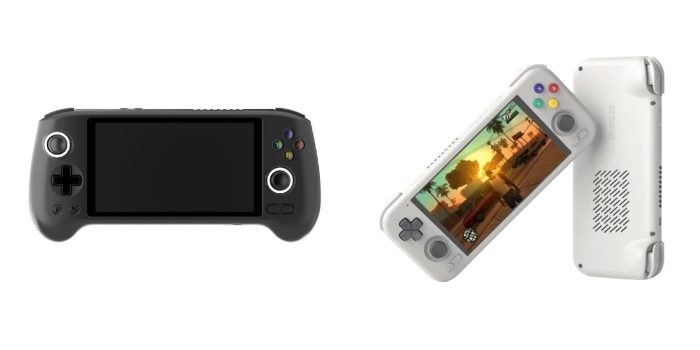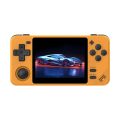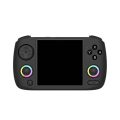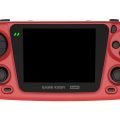When choosing a portable gaming console, it can be hard to decide which one will suit your needs best. Recently, I’ve spent a lot of time comparing two popular Android-based handhelds, the Anbernic RG556 and the Retroid Pocket 4 Pro. Both devices have their own strengths and weaknesses, and after trying both, I’m ready to share my thoughts. If you’re torn between these two, here’s my breakdown of their features, performance, and overall feel.
Design and Build Quality
Let’s start with the Anbernic RG556. One of the main reasons I was initially drawn to this device was its form factor and design. It features a 5.5-inch AMOLED screen, which really pops with bright colors and deep blacks. As someone who enjoys playing games in darker settings, I find the crispness of the black levels on the RG556’s screen particularly satisfying. The size is also perfect for portability without feeling too cramped during gameplay.
The ergonomics of the RG556 deserve praise too. It has comfortable grips and curves that fit well into the hands, making it easier to hold during long gaming sessions. The placement of the analog sticks and buttons also feels intuitive, though I wasn’t entirely thrilled with the clicky sound of the buttons—just a personal nitpick.
Switching to the Retroid Pocket 4 Pro, it’s clear that this device is designed for a different type of user. The console is smaller and lighter, making it easy to carry around. However, it lacks the ergonomic features of the RG556. There’s no substantial grip, so your hands might tire out quicker during extended gameplay. That said, the smaller design makes it easier to slip into a pocket or bag, living up to its “Pocket” name.
Screen Comparison
When it comes to screens, there’s a notable difference between the two devices. As I mentioned, the RG556 has a 5.5-inch AMOLED screen, while the Retroid Pocket 4 Pro sports a smaller 4.7-inch display with a lower resolution. While the RG556’s display offers better colors, the Retroid benefits from its more modest resolution when it comes to performance.
Even though the Retroid has a lower-resolution screen, the smaller size means it’s not as noticeable. If you primarily play retro games, the smaller screen doesn’t feel like a disadvantage. However, when I’m switching between consoles, the AMOLED display on the RG556 always catches my eye for its vibrancy and clarity.
Performance and Game Compatibility
Moving on to performance, the Retroid Pocket 4 Pro pulls ahead. It’s equipped with a more powerful processor than the RG556, and when combined with its lower-resolution screen, it delivers smoother performance, particularly in demanding games. For example, when playing *God of War*, I noticed the Retroid consistently maintained 60 frames per second at 2x resolution. The RG556, on the other hand, struggled to keep up and would occasionally dip to around 45 frames per second.
It’s not just the frame rates that show a difference—the Retroid handles most PlayStation 2 games without much trouble, while the RG556 requires lowering the resolution for smooth gameplay in more demanding titles. If your main focus is playing PS2 or other high-end games, the Retroid Pocket 4 Pro is the better choice for consistent performance.
Software and Features
One thing I appreciate about the Retroid Pocket 4 Pro is its software enhancements. The console includes a helpful menu that can be accessed with a swipe from the side of the screen, offering options like screen recording, screenshot capabilities, and a quick view of system performance stats like FPS, temperature, and memory usage. These small quality-of-life features make the Retroid feel more polished and user-friendly compared to the RG556.
That said, the RG556 does have one feature that stood out to me—the ability to map controller buttons for games that don’t natively support gamepads. It’s a handy tool, though I did run into a small bug when using it with the other language system settings, which caused it to crash. Switching the system to English fixed the problem, but it’s something to be aware of if you use non-English settings.
Battery Life
Battery life between the two consoles is fairly close. The RG556 comes with a 5000mAh battery, while the Retroid Pocket 4 Pro packs a slightly smaller 4500mAh battery. Despite this difference, both devices offer around 5 to 6 hours of gameplay depending on the titles you’re playing. The Retroid charges slightly faster, taking about 1.5 hours to go from zero to full, whereas the RG556 takes a little over 2 hours.
Final Thoughts (Which Is Better): Anbernic RG556 or Retroid Pocket 4 Pro?
So, which device would I recommend? Honestly, it depends on what you’re looking for. If you value performance and want a console that can handle more demanding PlayStation 2 titles without much hassle, the Retroid Pocket 4 Pro is the clear winner. Its smaller screen may not be as impressive as the RG556’s AMOLED display, but the trade-off is smoother gameplay in high-performance games.
On the other hand, if screen quality and ergonomics are more important to you, the Anbernic RG556 is a great option. The AMOLED display provides richer colors, and the design makes it comfortable to hold during long gaming sessions, without the need for additional accessories.





